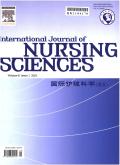Perceptions and recommendations of multiparas and health-related professionals on appropriate birth intervals: A descriptive qualitative study
IF 3.1
3区 医学
Q1 NURSING
引用次数: 0
Abstract
Objectives
This study aimed to explore the perceptions and recommendations of multiparas and health-related professionals regarding appropriate birth intervals (BIs) and key determinants.
Methods
In-depth semi-structured interviews were conducted between April 1 and June 30, 2022. Nine multiparas and thirteen health-related professionals were purposefully sampled until data saturation was reached. A thematic analysis approach was applied to the interview transcripts, utilizing dual independent coding and consensus validation in NVivo 12.0.
Results
The data generated two overarching categories: 1) balanced decision-making on the appropriate birth intervals and 2) internal and external determinants integrated with health and societal considerations. Four key themes emerged following the two categories: 1) consistency and discrepancy between the actual and recommended birth intervals of multiparas; 2) health- and development-oriented professional recommendations; 3) internal determinants related to individual-level factors; and 4) external determinants related to child-related factors, family support, and social security. Weighing women’s reproductive health and career development, multiparas and health-related professionals perceived a length between 18 and 36 months as the appropriate BI.
Conclusion
Multiparas and health-related professionals shaped their balanced recommendations on a relatively appropriate birth interval ranging from 18 to 36 months, which was influenced by women’s individual-level factors, child-related factors, family support, and social security. Targeted social and healthcare services should be offered to women and their families during the BIs.
多产妇和健康相关专业人员对适当生育间隔的看法和建议:一项描述性定性研究
目的本研究旨在探讨多产妇和健康相关专业人员对适当生育间隔(BIs)和关键决定因素的看法和建议。方法于2022年4月1日至6月30日进行深度半结构化访谈。有目的地对9名多段落和13名与健康有关的专业人员进行抽样,直到达到数据饱和。在NVivo 12.0中使用双重独立编码和共识验证,采用主题分析方法对访谈记录进行分析。结果数据产生了两个总体类别:1)关于适当生育间隔的平衡决策;2)综合考虑健康和社会因素的内部和外部决定因素。以下两类出现了四个关键主题:1)实际和建议生育间隔之间的一致性和差异;2)以健康和发展为导向的专业建议;3)与个体层面因素相关的内部决定因素;4)与儿童相关因素、家庭支持和社会保障相关的外部决定因素。在权衡妇女的生殖健康和职业发展后,多产妇和健康相关专业人员认为18至36个月是适当的基本健康期。结论妇产科专业人员和健康相关专业人员对18 ~ 36个月生育间隔的均衡建议受妇女个人因素、儿童相关因素、家庭支持和社会保障等因素的影响。在生育期间,应向妇女及其家庭提供有针对性的社会和保健服务。
本文章由计算机程序翻译,如有差异,请以英文原文为准。
求助全文
约1分钟内获得全文
求助全文
来源期刊

International Journal of Nursing Sciences
Nursing-Nursing (all)
CiteScore
6.10
自引率
2.60%
发文量
408
审稿时长
25 days
期刊介绍:
This journal aims to promote excellence in nursing and health care through the dissemination of the latest, evidence-based, peer-reviewed clinical information and original research, providing an international platform for exchanging knowledge, research findings and nursing practice experience. This journal covers a wide range of nursing topics such as advanced nursing practice, bio-psychosocial issues related to health, cultural perspectives, lifestyle change as a component of health promotion, chronic disease, including end-of-life care, family care giving. IJNSS publishes four issues per year in Jan/Apr/Jul/Oct. IJNSS intended readership includes practicing nurses in all spheres and at all levels who are committed to advancing practice and professional development on the basis of new knowledge and evidence; managers and senior members of the nursing; nurse educators and nursing students etc. IJNSS seeks to enrich insight into clinical need and the implications for nursing intervention and models of service delivery. Contributions are welcomed from other health professions on issues that have a direct impact on nursing practice.
 求助内容:
求助内容: 应助结果提醒方式:
应助结果提醒方式:


